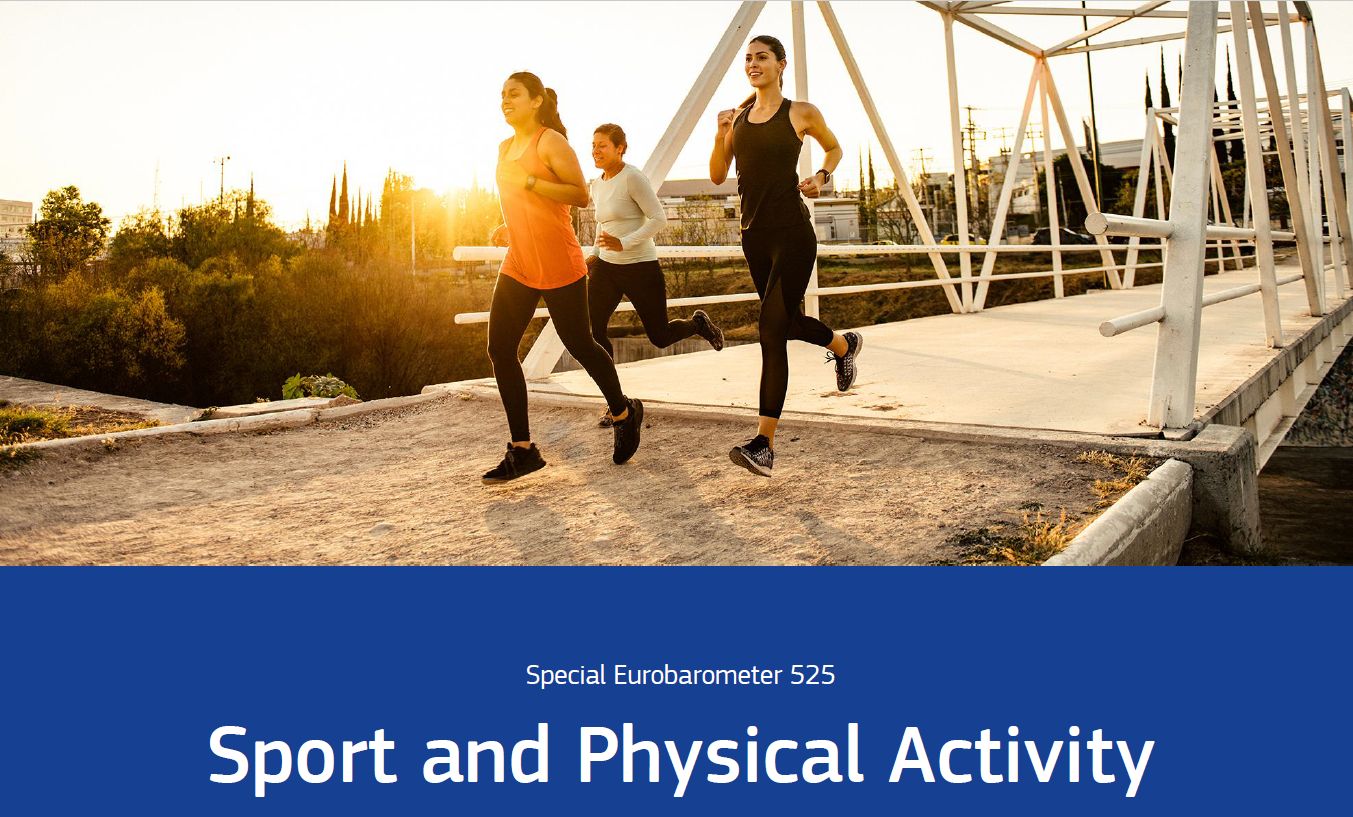New Eurobarometer on sport and physical activity shows little change since 2017 – but take note of a growing trend
23/09/2022

Europeans are spending less time being active in sports-related settings and more time exercising outdoors in their surroundings, according to the European Commission's latest Eurobarometer on Sport and Physical Activity (Special Eurobarometer 525) published on 19 September 2022. But the results of Europe’s biggest survey on trends in our sector reveal only a slight change since 2017, with 38% of Europeans stating that they play sport or exercise in sports settings regularly/with some regularity (40% in 2017) and 50% claiming to regularly/with some regularity engage in other forms of physical activity (44% in 2017).
It has been almost six years since the last Eurobarometer survey on sport and physical activity was conducted, and since then Europeans have experienced one of the biggest disruptions in history to their access to public and outdoor exercise, with Covid-19 lockdowns forcing many facilities to close and residents to stay inside. The new Eurobarometer takes the impact of Covid-19 restrictions on exercise habits into account, finding that whereas 43% of respondents said they were just as active or even more active in April-May 2022 than before the pandemic, 18% have stopped completely and 34% are less active.
Other new survey categories added this year include “Attention to the impact that sport can have on the environment” and gender equality in sports organisations, reflecting the increased awareness of these topics in European societies and European policy in recent years.
From a national perspective, the Nordic and Benelux countries and Slovenia remain the most active countries in both sport and active transport or other daily forms of exercise. The least active countries are also similar, with Portugal overtaking Malta as the country with the least active respondents.
The motivators and barriers affecting participation also remain the same. Physical and social benefits of physical activity – health, fitness, having fun and weight control – are the most common drivers and a variety of barriers – lack of time, interest, physical ability, affordability – are keeping participants away
The findings map the frequency and intensity of individuals’ physical activity, plus their involvement in club life and volunteering. Only a small proportion of Europeans are members of a sports club (12%) or volunteer at one (10%), and the trend of using parks and outdoor spaces (47%, up 7 percentage points since 2017), the commute to work or school (24%, +1) and the home (37%, +5) as places to be active is climbing steadily.
“The Eurobarometer survey results give important insights into European trends in our sector,” ISCA Secretary General Jacob Schouenborg says.
“It underlines, first, that the challenge to get Europeans moving is as great as ever. And it points to some important trends that ISCA and our members must take into account. We are taking our starting point from the organised grassroots sport sector, but we must continuously take stock of the trends and barriers and the bigger picture of physical movement to ensure the maximum societal value and relevance of grassroots sport.”
The 2022 Eurobarometer results may not reveal jaw-dropping changes at first glance, but the growing trend towards outdoor and less structured physical activity is a message that should make physical activity advocates, club managers and decision-makers take notice. But there are positive signs for grassroots sport providers, as the respondents’ perceptions of the social benefits coupled with an awareness of local opportunities to be involved in sport or physical activities underline the potential to rebound after the pandemic.
“Nearly three-quarters of Europeans agree that local sport clubs and other local providers offer many opportunities to be physically active,” the report states. The key to increasing participation over the next four-five years will therefore be to adapt and reconnect Europeans with the opportunities around them to #BeActive.
Read more and download the latest Eurobarometer on Sport and Physical Activity here
Posted on 23/09/2022 by Rachel Payne, ISCA

